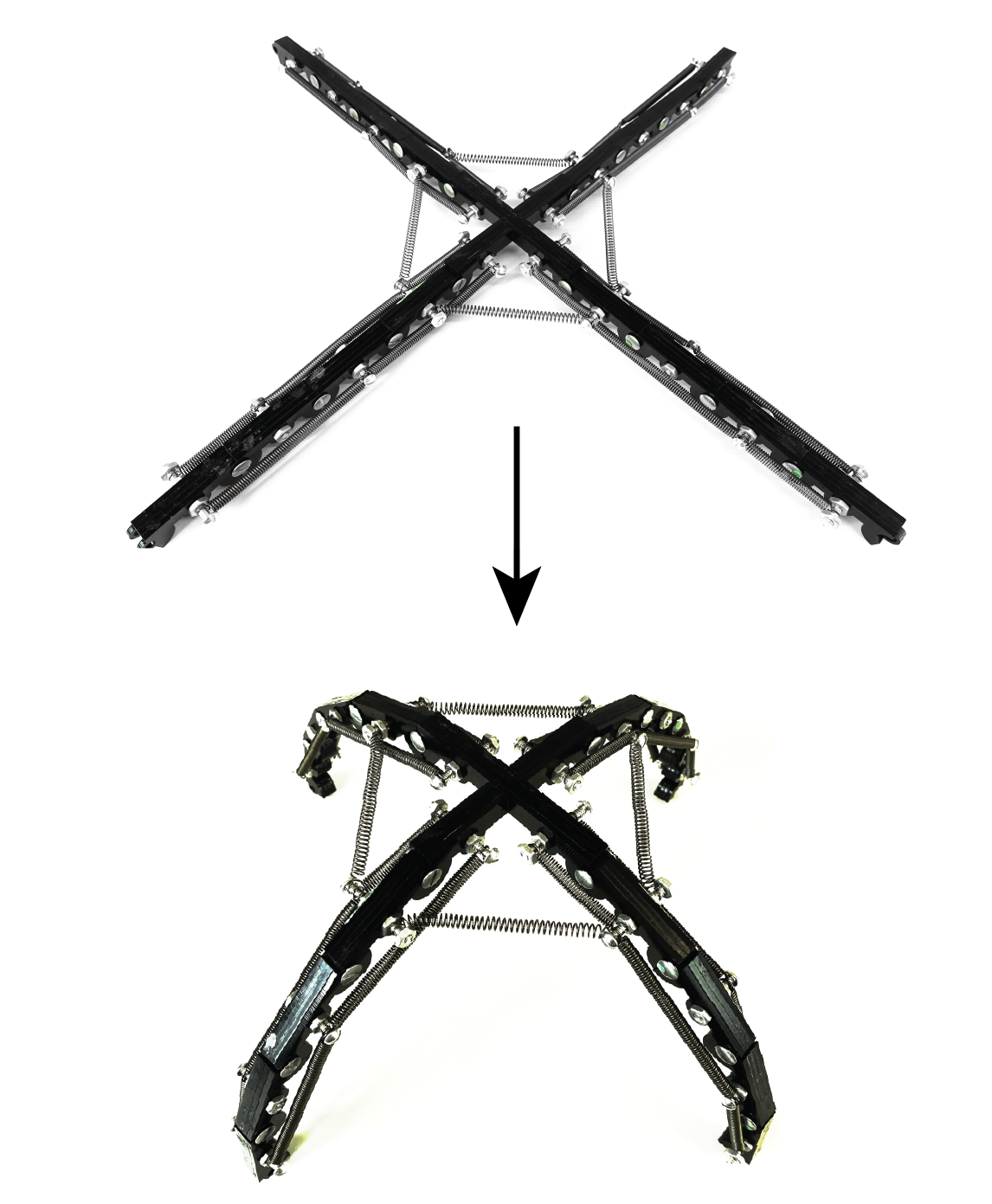Geometric Nonlinearity
Geometric nonlinearity; Transition Wave
Geometric Nonlinearity and Transition Waves
A carefully designed 1D linkage mechanism can become bistable due to its geometric nonlinearity. A chain of bistable elements support transition waves propagation that sequentially switch bistable elements from one stable configuration to another. Transition waves have received significant interest in recent years not only because of their rich physics, but also for their potential applications, including unidirectional propagation, energy harvesting and mechanical computation. In my postdoctorate, we exploited the propagation of transition waves in a bistable 1D linkage as a robust mechanism to realize structures that can be quickly deployed. With a combination of experiments and analyses, we showed that if the bistable joints are properly designed, transition waves can propagate throughout the entire structure and transform the initial straight configuration into a curved one. We then demonstrated that such bistable linkages can be used as building blocks to realize deployable 3D structures of arbitrary shape.

Publications:
- A. Zareei, B. Deng & K. Bertoldi, Harnessing transition waves to realize deployable structures, Proceedings of the National Academy of Sciences, 117.8 (2020): 415-420, [PDF, News]
Harnessing Mechanical Deformation to Reduce Spherical Aberration
Inspired by the crystalline lens and ciliary muscle of the human eye, intense efforts have been devoted to the design of optical lenses with adjustable properties. While most studies have focused on the tunability of the focal length, here we use a combination of experiments, numerical simulation and analysis to show that an applied tensile strain can also largely reduce spherical aberration. We first demonstrate the concept for a cylindrical elastomeric lens and then show that it is robust and valid over a range of geometries and material properties. As such, our study suggests that large mechanical deformations may provide a simple route to achieve the complex profiles required to minimize aberration and realize lenses capable of producing images of superior quality.
Publications:
- A. Zareei, E. Medina & K. Bertoldi, Harnessing Mechanical Deformation to Reduce Spherical Aberration in Soft Lenses, Physical Review Letters, 2021, in press
Non-reciprocal Digitized Gate
Motion at low Reynolds number is impossible with periodic wave motions due to time symmetry of equations; however, an asymmetric motion can generate locomotion. We have created an artificial mechanisms that mimic the locomotory functions of nematodes with efficient viscous pumping. We show that the blade not only induces a flow structure similar to that of the worm, but also mixes the surrounding fluid by generating a circulatory flow.

- A. Zareei, M.A. Jalali, M. Saadat & M.-R. Alam, Digitized Gait of C. Elegans generate propulsion and mixing, Physical Review Applied, 11.1 (2019): 014065, [PDF]